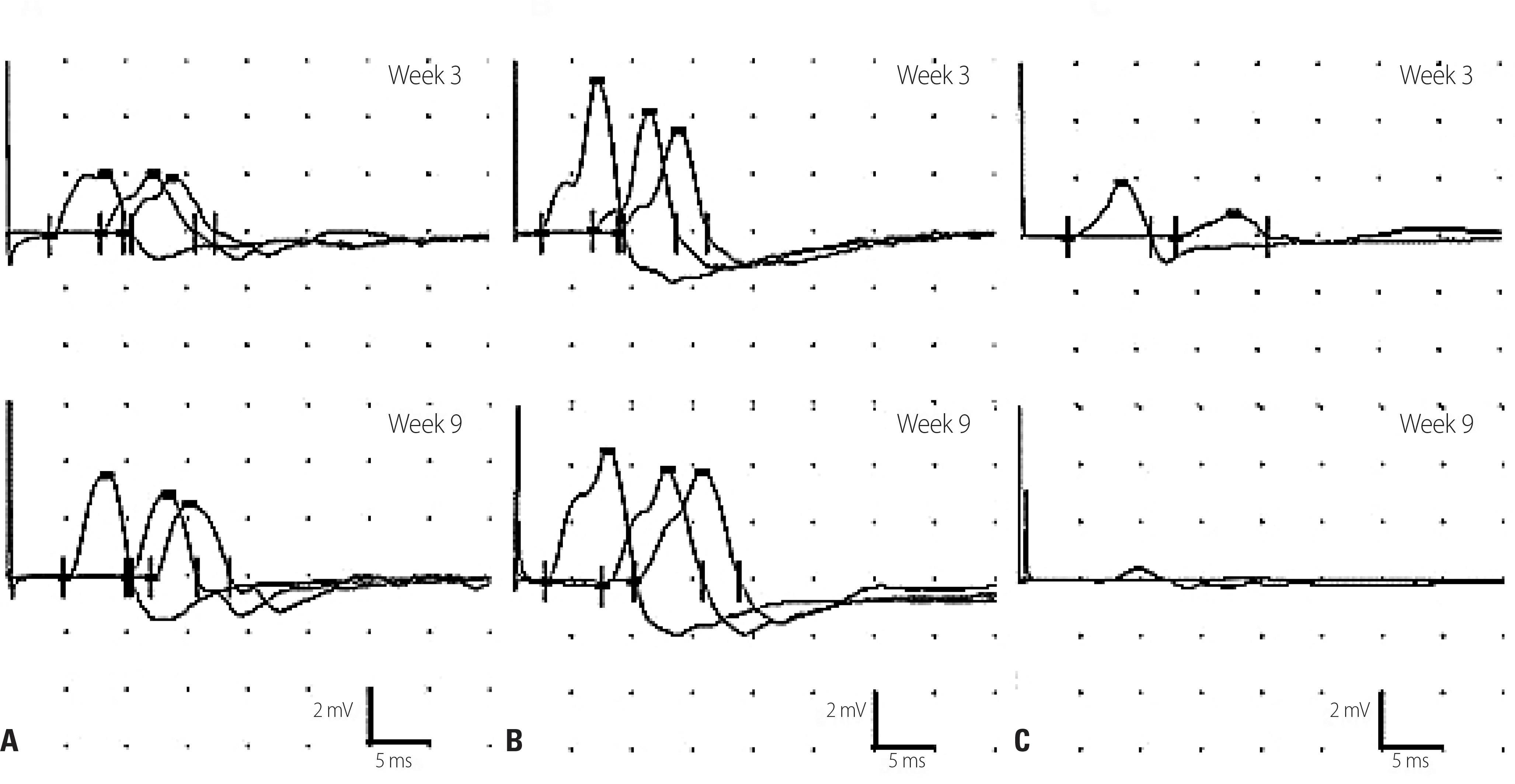초록
Peripheral neuropathy associated with hyper-IgE-emia have been rarely reported. Here we present a 72-year-old man with acute motor axonal neuropathy who had relatively poor prog-nosis. The serum was weakly positive for IgG GQ1b and GT1a, and serum IgE was significantly elevated. He was transferred to a rehabilitation center with Medical Research Council grade 3 lower extremity weakness on admission day 65. We would suggest that hyper-IgE-emia may increase the magnitude and rate of neural damage in this case.
REFERENCES
1.Johansson SG. The History of IgE: From discovery to 2010. Curr Allergy Asthma Rep. 2011. 11:173–177.

3.Kimura A., Yoshino H., Yuasa T. Chronic inflammatory demyelinating polyneuropathy in a patient with hyperIgEaemia. J Neurol Sci. 2005. 231:89–93.

4.Coutinho BM., Nascimento OJ., Freitas MR. Distal acquaried de-mylinating symmetric neuropathy in two patients with essential hiperIgEmia. Arq Neuropsiquiatr. 2013. 71:493–494.

5.Pate MB., Smith JK., Chi DS., Krishnaswamy G. Regulation and dys-regulation of immunoglobulin E: a molecular and clinical perspec-tive. Clin Mol Allergy. 2010. 8:3.

6.Walker ME., Hatfield JK., Brown MA. New insights into the role of mast cells in autoimmunity: evidence for a common mechanism of action? Biochim Biophys Acta. 2012. 1822:57–65.

7.He L., Zhang G., Liu W., Gao T., Sheikh KA. Anti-Ganglioside anti-bodies induce nodal and axonal injury via Fcγ receptor-mediated inflammation. J Neurosci. 2015. 35:6770–6785.

8.Mathey EK., Derfuss T., Storch MK., Williams KR., Hales K., Woolley DR, et al. Neurofascin as a novel target for autoantibody-mediated axonal injury. J Exp Med. 2007. 204:2363–2372.

9.Dines KC., Powell HC. Mast cell interactions with the nervous system: relationship to mechanisms of disease. J Neuropathol Exp Neurol. 1997. 56:627–640.
Fig. 1.
Data from nerve conduction studies. Motor nerve conduction studies revealed normal velocities but variable decreases in amplitude in the median (A), ulnar (B), and tibial (C) nerves. The compound muscle action potential amplitude in the median nerve had improved by week 9, while that in the tibial nerve had decreased.





 PDF
PDF ePub
ePub Citation
Citation Print
Print


 XML Download
XML Download